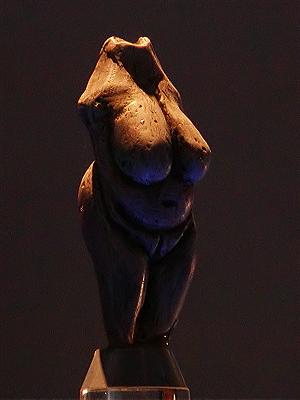Slovakia
File:Lightning over the Tatras.ogg
Slovakia, officially known as the Slovak Republic, is a landlocked country in Central Europe. It is bordered by Poland to the north, Ukraine to the east, Hungary to the south, Austria to the west, and the Czech Republic to the northwest. Slovakia's territory spans about 49,000 square kilometers and is mostly mountainous. The population is over 5 million and consists largely of ethnic Slovaks. The capital and largest city is Bratislava, and the second largest city is Košice.
History[edit | edit source]
The area now known as Slovakia has been inhabited since the early Stone Age. Throughout its history, it has been part of various states, including the Great Moravian Empire, the Kingdom of Hungary, the Austro-Hungarian Empire, and Czechoslovakia. Slovakia became an independent nation on January 1, 1993, following the peaceful dissolution of Czechoslovakia, often referred to as the Velvet Divorce.
Geography[edit | edit source]
Slovakia is known for its natural landscapes, mountains, caves, medieval castles, and towns. The Carpathian Mountains extend across most of the northern half of the country. Among these mountain ranges, the High Tatras are a popular destination for skiing and home to the highest peak in Slovakia, Gerlachovský štít, standing at 2,655 meters. The country also has numerous rivers, including the Danube, which it shares with Austria and Hungary.
Economy[edit | edit source]
Slovakia has a high-income advanced economy with one of the fastest growth rates in the European Union and the OECD. It joined the European Union in 2004 and the Eurozone on January 1, 2009. The country's economy is largely driven by exports, primarily automobiles, machinery, and electrical equipment. Slovakia is also known for its production of high-quality steel and is one of the leading countries in the production of cars per capita.
Culture[edit | edit source]
Slovak culture is a rich blend of traditional Slavic customs with Hungarian, Austrian, and German influences. Folklore and traditional music play an important role in Slovak life, especially in rural areas. The country is also known for its architectural diversity, with a range of styles from Romanesque and Gothic to Baroque and Art Nouveau. Slovakia has several UNESCO World Heritage Sites, including the historic town of Banská Štiavnica, the wooden churches of the Slovak part of the Carpathian Mountain Area, and the Spiš Castle.
Government and Politics[edit | edit source]
Slovakia is a parliamentary democratic republic with a multi-party system. The President is the head of state, elected by direct popular vote for a five-year term, and the Prime Minister is the head of government, leading the executive branch. The country's legislative body is the National Council of the Slovak Republic, a unicameral parliament.
Education and Science[edit | edit source]
Slovakia places a strong emphasis on education and science. The country has a comprehensive education system, and higher education is represented by a number of universities and colleges. Slovakia has made significant contributions to science and technology, with several Slovak inventors and scientists gaining international recognition.
Demographics[edit | edit source]
The majority of the population is ethnic Slovak (80.7%), with Hungarian being the largest minority group. Other ethnic groups include Roma, Czech, and Ruthenian. Slovak is the official language, and the majority of Slovaks are Roman Catholic, with Protestant and Greek Catholic minorities.
Conclusion[edit | edit source]
Slovakia, with its rich history, diverse culture, and advanced economy, plays an important role in Europe. Despite its small size, the country offers a unique blend of natural beauty and cultural richness, making it a fascinating destination for visitors and an important player on the international stage.
Search WikiMD
Ad.Tired of being Overweight? Try W8MD's physician weight loss program.
Semaglutide (Ozempic / Wegovy and Tirzepatide (Mounjaro / Zepbound) available.
Advertise on WikiMD
|
WikiMD's Wellness Encyclopedia |
| Let Food Be Thy Medicine Medicine Thy Food - Hippocrates |
Translate this page: - East Asian
中文,
日本,
한국어,
South Asian
हिन्दी,
தமிழ்,
తెలుగు,
Urdu,
ಕನ್ನಡ,
Southeast Asian
Indonesian,
Vietnamese,
Thai,
မြန်မာဘာသာ,
বাংলা
European
español,
Deutsch,
français,
Greek,
português do Brasil,
polski,
română,
русский,
Nederlands,
norsk,
svenska,
suomi,
Italian
Middle Eastern & African
عربى,
Turkish,
Persian,
Hebrew,
Afrikaans,
isiZulu,
Kiswahili,
Other
Bulgarian,
Hungarian,
Czech,
Swedish,
മലയാളം,
मराठी,
ਪੰਜਾਬੀ,
ગુજરાતી,
Portuguese,
Ukrainian
Medical Disclaimer: WikiMD is not a substitute for professional medical advice. The information on WikiMD is provided as an information resource only, may be incorrect, outdated or misleading, and is not to be used or relied on for any diagnostic or treatment purposes. Please consult your health care provider before making any healthcare decisions or for guidance about a specific medical condition. WikiMD expressly disclaims responsibility, and shall have no liability, for any damages, loss, injury, or liability whatsoever suffered as a result of your reliance on the information contained in this site. By visiting this site you agree to the foregoing terms and conditions, which may from time to time be changed or supplemented by WikiMD. If you do not agree to the foregoing terms and conditions, you should not enter or use this site. See full disclaimer.
Credits:Most images are courtesy of Wikimedia commons, and templates, categories Wikipedia, licensed under CC BY SA or similar.
Contributors: Prab R. Tumpati, MD





